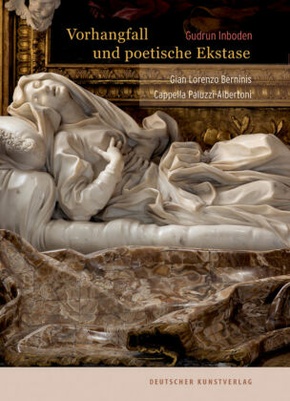
Vorhangfall und poetische Ekstase - Gian Lorenzo Berninis Cappella Paluzzi-Albertoni
| Verlag | Deutscher Kunstverlag |
| Auflage | 2020 |
| Seiten | 176 |
| Format | 17,8 x 1,6 x 24,7 cm |
| Gewicht | 640 g |
| ISBN-10 | 3422983163 |
| ISBN-13 | 9783422983168 |
| Bestell-Nr | 42298316A |
Die Draperie der Cappella Albertoni (1674/75) wird von der Autorin erstmals als Vorhang - Leitmotiv in Berninis bildhauerischem uvre - und vor dem Hintergrund der Gegenreformation und des von Bruno und Galilei 'geöffneten Himmelsdachs' als offene Redefigur gedeutet. Der Vorhang fällt, wie auf der barocken Bühne und in Berninis Komödien, um sich zu öffnen, und wie der 'metaphorische Vorhang' der Dichtungstheorien des 17. Jahrhunderts ist er verknüpft mit dem ereignishaft ausgelösten Affekt der Ekstase. Metaphern deuten das Eindeutige um in Vieldeutigkeit. So wird die mystische zur poetischen Ekstase. Es liegt daher keine biographische Erzählung vor, sondern es handelt sich vielmehr um das Bekenntnis zu einer Kunst, die die schöpferischen Kräfte des Geistes in der ästhetischen Erfahrung befreit anstatt sie an Erkenntnis zu binden.
The author interprets the drapery of the Cappella Albertoni (1674-75) for the first time as a curtain - a leitmotif in Bernini's sculptural oeuvre - and as an overt figure of speech before the backdrop of the Counter Reformation and of Bruno and Galilei's "open vault of the sky". The curtain falls so as to be opened, as on the Baroque stage and in Bernini's comedies, and like the "metaphorical curtain" in theories of poetry of the seventeenth century, is linked with the eventfully induced affect of ecstasy. Metaphors reinterpret the unambiguous as the ambiguous. The mystical therefore becomes poetic ecstasy. No biographical narrative is hence provided; it is instead about a declaration of belief in an art that liberates the creative powers of the intellect by means of aesthetic experience rather than by linking it to perception.
